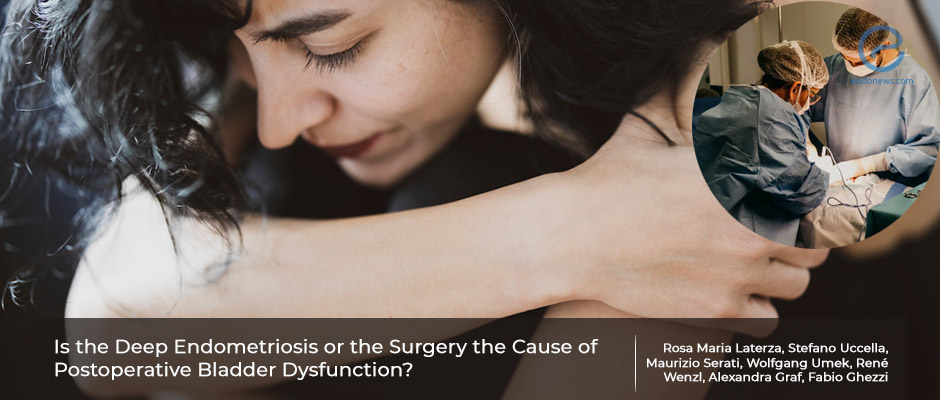Egg or chicken, which is causing bladder symptoms, DIE or surgery for DIE?
Mar 16, 2022
Surgery for DIE improves overactive bladder symptoms even the urinary nodule is not the case
Key Points
Highlights:
- The study highlights an important problem: leaving a DIE nodule would worsen bladder symptoms. Thus, proper resection surgery is vital.
Importance:
- It is an indicative study on monitoring and evaluating DIE patients with bladder symptoms and gives suggestions for pre and postoperative follow-ups.
What's done here:
- Patients operated on for DIE diagnosis and have overactive bladder symptoms (OAB), in two different tertiary centers have been included in the study prospectively.
- Reoperated patients, patients with bladder endometriosis, patients with recurrent urinary tract infection, patients with a history of diabetes mellitus, psychiatric or neurologic disease, patients on hormonal therapies, pregnant patients, patients younger than 18, and patients with pelvic organ prolapsus and patients who undergone extensive urologic surgery have been excluded.
- All patients have undergone urodynamic evaluation pre and postoperatively (3 months after surgery) and filled the "Urinary Incontinence Short Form".
Key Results:
- After exclusions, 32 patients have met the criteria.
- In the population in which no urologic and/or bowel operations have been applied both filling and voiding parameters on urodynamic tests have been improved.
- Bladder capacity and flow rates have been significantly increased after operations.
Limitations:
- Rather than the low patient numbers and short follow-up times the study is the first study in this field questioning the effect of DIE surgery on bladder symptoms when the urinary system hasn’t been affected by DIE.
Lay Summary
Urinary symptoms could be overwhelming and sometimes could be hidden behind pain symptoms, but still might cause secondary damages on kidneys and bladder if remain undetected.
In the prospective study conducted by Laterza et al, the authors questioned whether the overactive bladder is a case for patients who has DIE diagnosis and do not have urinary nodules and could be improved after surgery. Patients who have been operated on for DIE diagnosis and have overactive bladder symptoms (OAB), in two different tertiary centers have been included in the study prospectively.
Reoperative patients, patients with bladder endometriosis, patients with recurrent urinary tract infection, patients with a history of diabetes mellitus, psychiatric or neurologic disease, patients on hormonal therapies, pregnant patients, patients younger than 18, and patients with pelvic organ prolapsus and patients who undergone extensive urologic surgery have been excluded.
All patients have undergone urodynamic evaluation pre and postoperatively (3 months after surgery) and filled Urinary Incontinence Short Form (ICIQ-UI SF). After exclusions, 32 patients have met the criteria. In the population in which no urologic and/or bowel operations have been applied both filling and voiding parameters on urodynamic tests have been improved.
Bladder capacity and flow rates have been significantly increased after operations. The authors highlighted the effect of precise surgery and dissection of the posterior peritoneum with meticulous precaution is the key element of making improvements on bladder functions. Even though the case numbers are pretty low it still remains an important study considering being the first study that looks after overactive bladder symptomatology on DIE patients.
Research Source: https://pubmed.ncbi.nlm.nih.gov/34986409/
urinary tract endometriosis overactive bladder

